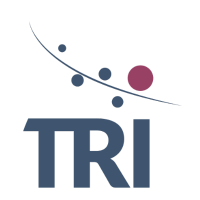New FDA Guidance Reshapes Decentralized Trial Oversight

The U.S. Food and Drug Administration (FDA) has made a significant move to modernize clinical research with the release of its final Guidance for Conducting Clinical Trials with Decentralized Elements. Published this month, the guidance reflects the increasing adoption of decentralized clinical trials (DCTs), where activities like telehealth consultations, home-based care, and the involvement of local healthcare providers are used in place of traditional trial site visits. While this shift aims to improve patient access and inclusivity, it also introduces new challenges, particularly in risk management and data oversight, that demand innovative solutions.
FDA’s Push for Decentralization
The FDA’s new guidance comes at a time when decentralized trials are becoming more common, spurred by advancements in digital health technologies and the increasing demand for more flexible trial designs. While many clinical trials have long included some decentralized elements—such as remote lab tests—the COVID-19 pandemic rapidly accelerated the need for telemedicine, remote monitoring, and digital health tools.
The FDA acknowledges the potential benefits of decentralization, particularly in expanding access to underrepresented and geographically dispersed populations. This can enhance trial diversity and improve participant retention. However, decentralized trials also introduce complexities, particularly around ensuring consistent data quality and patient monitoring. The FDA’s guidance offers clear recommendations for addressing these challenges, but leaves room for interpretation, particularly when it comes to managing risk.
Risk Management Takes Center Stage
The most pertinent question raised by the new guidance is how to ensure trial quality and compliance when activities are no longer confined to traditional sites. RBQM is already designed to address variability and risk in clinical trials, but the decentralized model requires an even more nuanced approach.
Decentralized trials distribute the burden of trial activities across multiple locations—participants’ homes, local healthcare providers, and mobile units. This diffusion introduces risks such as inconsistent data collection, difficulties in monitoring investigational product use, and greater variability and potential bias in patient-reported outcomes. The FDA’s guidance makes it clear that while decentralized elements may increase trial accessibility, they also require enhanced oversight to ensure that trial data remains reliable and patient safety is preserved.
This is where RBQM becomes essential. By continuously assessing the risks that decentralized elements introduce, sponsors can adjust their monitoring strategies accordingly. Timely risk detection and mitigation are crucial, particularly when trial personnel are not physically present to oversee procedures or monitor investigational product administration.
The Role of Centralized Monitoring
Centralized monitoring, a core component of RBQM, is specifically recommended in the FDA guidance as a critical tool for decentralized trials in the following statement in the September ’24 DCT guidance: “FDA recommends risk-based monitoring approaches and the use of centralized monitoring to identify and proactively follow up on missing data, inconsistent data, data outliers, and potential protocol deviations that may be indicative of systemic or significant errors.”
For RBQM practitioners, this reinforces the need for advanced systems capable of providing insights and oversight. Decentralized trials generate data from a variety of sources —telehealth visits, remote monitoring devices, and local healthcare providers. Moreover, the FDA’s emphasis on digital health technologies (DHTs) as a cornerstone of decentralized trials aligns with RBQM’s focus on data integrity. These technologies, which range from wearable health monitors to patient-reported outcome apps, provide new opportunities for data collection, but they also introduce risks related to data reliability and patient adherence. In order to gain reliable value from these new approaches and technologies, centralized monitoring systems are essential to identify patterns in the data which may indicate differences or biases in the way the data has been collected and by whom. The ability to segment DCT data by source and collection method is key to being able to perform meaningful data analysis and to being able to generate actionable insights for monitors to follow up on.
Addressing Patient Safety in Decentralized Settings
Perhaps the most complex issue the FDA guidance addresses is how to ensure patient safety when trial participants are not regularly seen by investigators. Safety monitoring in decentralized trials is a primary concern, especially when investigational products are administered in non-clinical settings such as the participant’s home.
According to the FDA, sponsors must implement comprehensive safety monitoring plans that account for the decentralized nature of the trial. This includes ensuring that adverse events can be promptly reported and managed, even if participants are remote. RBQM’s ability to establish early warning systems and identify safety risks is more relevant than ever in these cases.
By leveraging Key Risk Indicators and automating risk detection, RBQM systems can help sponsors maintain high standards of patient safety across all locations. Safety monitoring, combined with proactive risk management, can ensure that decentralized trials are conducted without compromising on patient care or trial quality.
A New Era for RBQM and Clinical Trials
The FDA’s final guidance on decentralized clinical trials is a watershed moment for clinical research, as it formalizes the agency’s expectations for how sponsors can use decentralized elements without sacrificing quality or compliance. For RBQM professionals, the message is clear: as trials evolve to become more flexible and patient-centric, risk management must also evolve to meet the new challenges of decentralized models.
Decentralized trials offer undeniable benefits, but they also come with new risks—risks that must be managed. As the industry adapts to these changes, RBQM will play a crucial role in ensuring that decentralized trials meet both their scientific and regulatory goals. With the right strategies in place, sponsors can harness the full potential of decentralized trials, while safeguarding the integrity of their research and the well-being of their participants.
In this new era of clinical research, RBQM is not just a tool for managing risk—it is the foundation upon which the success of decentralized clinical trials will rest.
